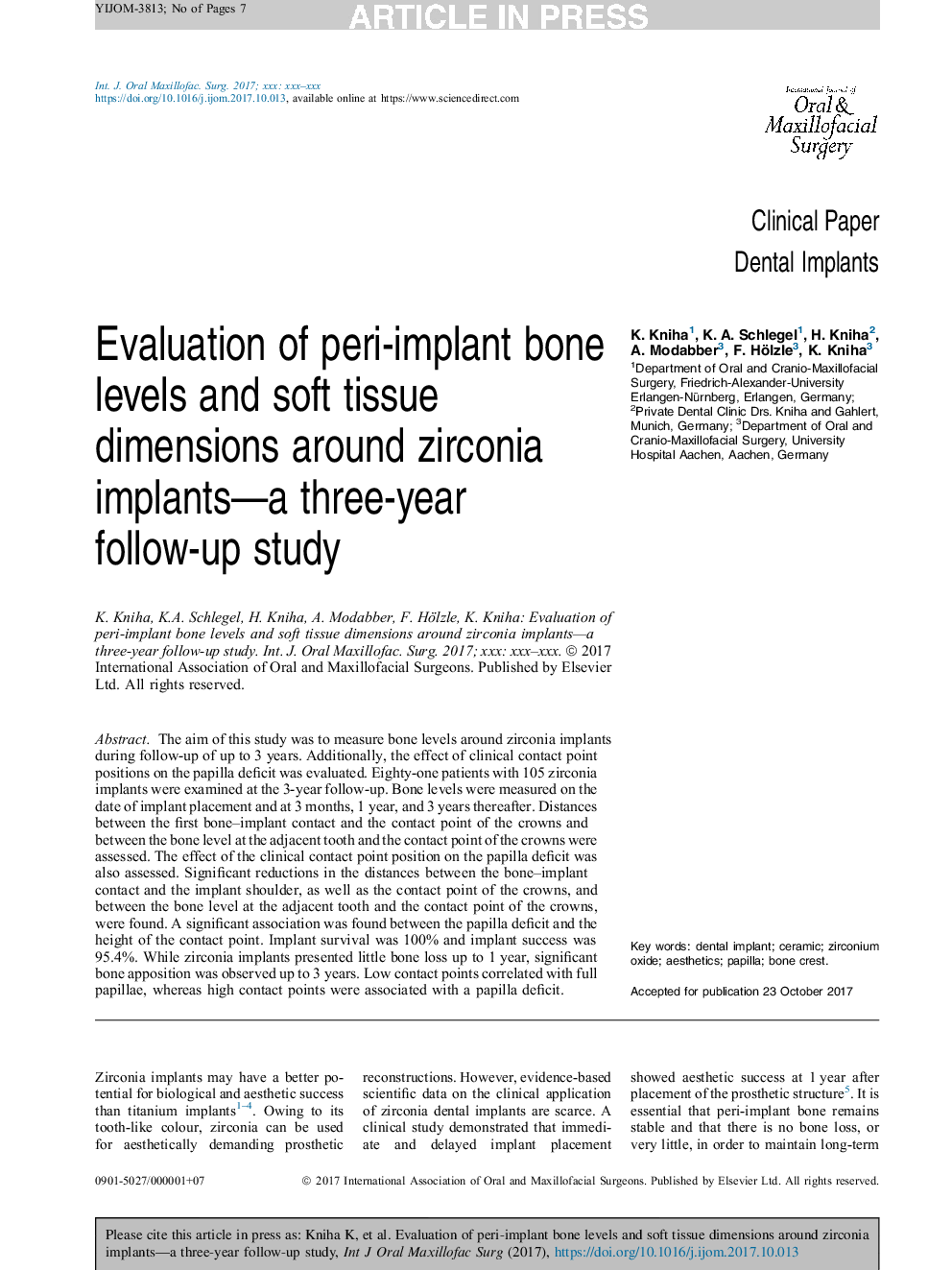| Article ID | Journal | Published Year | Pages | File Type |
|---|---|---|---|---|
| 8697845 | International Journal of Oral and Maxillofacial Surgery | 2018 | 7 Pages |
Abstract
The aim of this study was to measure bone levels around zirconia implants during follow-up of up to 3 years. Additionally, the effect of clinical contact point positions on the papilla deficit was evaluated. Eighty-one patients with 105 zirconia implants were examined at the 3-year follow-up. Bone levels were measured on the date of implant placement and at 3 months, 1Â year, and 3 years thereafter. Distances between the first bone-implant contact and the contact point of the crowns and between the bone level at the adjacent tooth and the contact point of the crowns were assessed. The effect of the clinical contact point position on the papilla deficit was also assessed. Significant reductions in the distances between the bone-implant contact and the implant shoulder, as well as the contact point of the crowns, and between the bone level at the adjacent tooth and the contact point of the crowns, were found. A significant association was found between the papilla deficit and the height of the contact point. Implant survival was 100% and implant success was 95.4%. While zirconia implants presented little bone loss up to 1Â year, significant bone apposition was observed up to 3Â years. Low contact points correlated with full papillae, whereas high contact points were associated with a papilla deficit.
Related Topics
Health Sciences
Medicine and Dentistry
Dentistry, Oral Surgery and Medicine
Authors
K. Kniha, K.A. Schlegel, H. Kniha, A. Modabber, F. Hölzle, K. Kniha,
